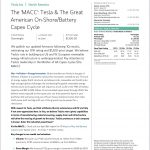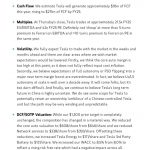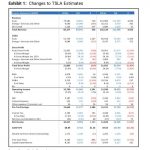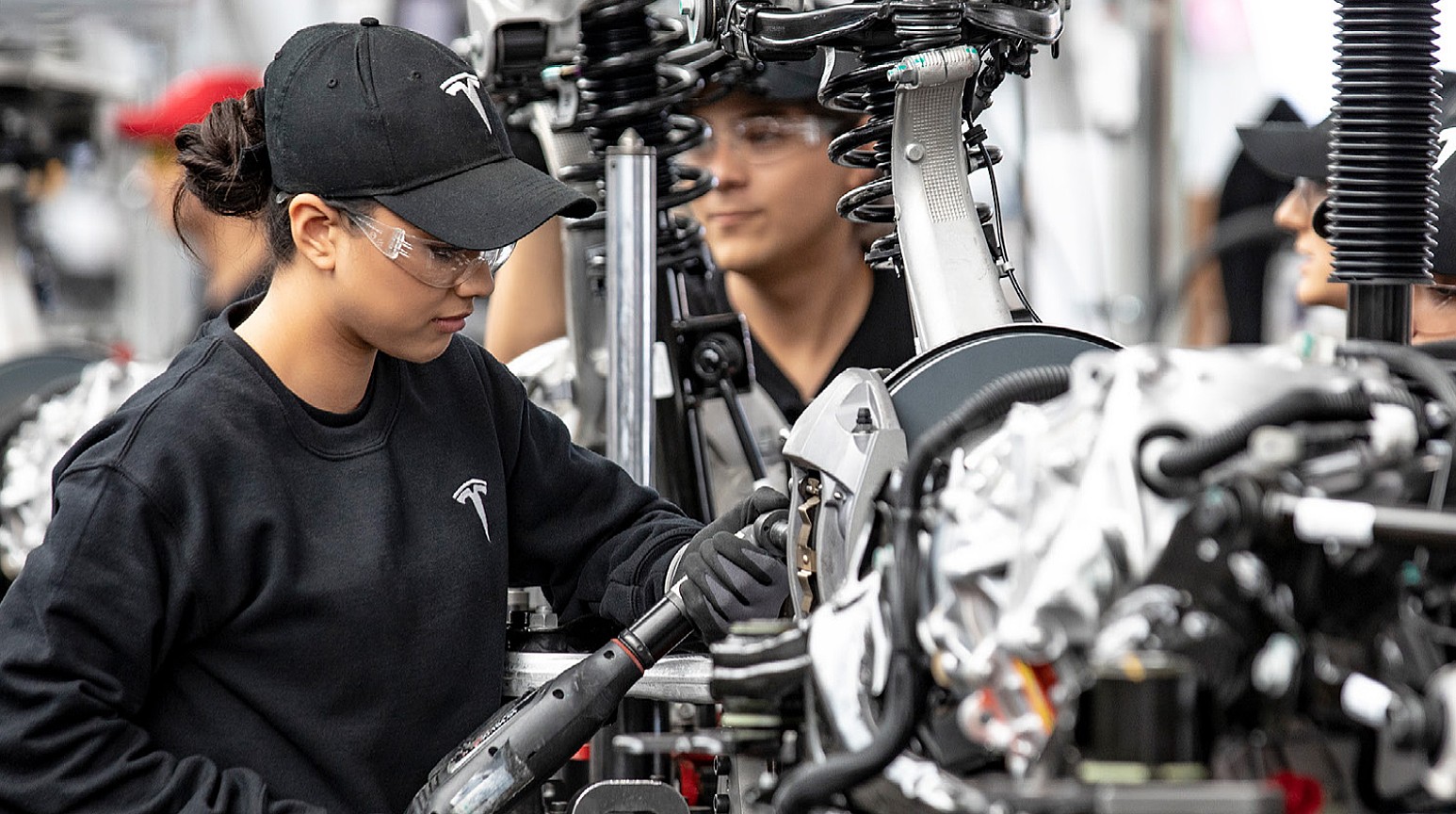
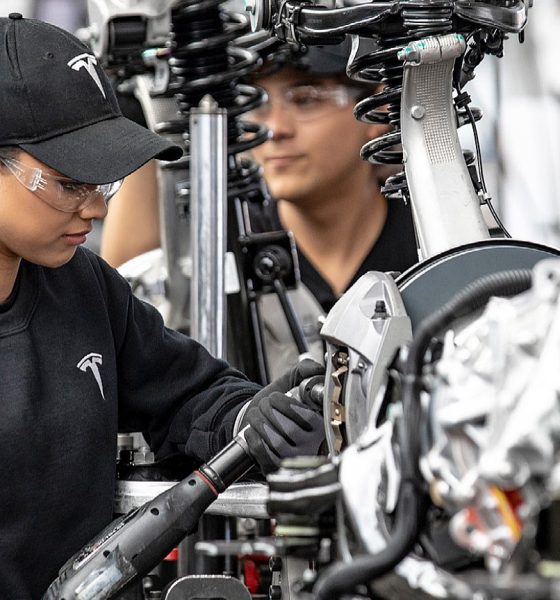
Investor's Corner
Tesla’s growth story continues in manufacturing and not autonomy: Morgan Stanley
Tesla’s (NASDAQ: TSLA) growth story has leaned on the potential of autonomous, self-driving vehicles revolutionizing the way everyday transportation is performed. While Tesla has developed its Autopilot and Full Self-Driving suites with relative success in the past several years, Morgan Stanley analysts are not convinced that autonomous driving programs will continue to fuel the automaker’s growth story and continuing expansion. Instead, Tesla’s bread and butter, which is vehicle manufacturing, along with other strengths like material sourcing, supply chain, and infrastructure development, is where the financial firm is putting its money.
It is no secret Tesla has fallen short with its FSD and Robotaxi plans, as CEO Elon Musk has predicted since 2018 that the automaker would complete its venture into fully-autonomous vehicles. However, each year has gone by with a new set of challenges, whether they would be based on manufacturing or the supply of necessary parts, further delaying the rollout of a “feature complete” FSD suite or a rollout of the planned Robotaxi fleet. This has led to some skepticism about whether the electric car company will really continue its monumental pace of growth through that medium, and not another, which Tesla has already proven to be well-versed in: manufacturing.
Tesla manufacturing prowess, stock split plans indicate ‘massive position of strength:’ Wedbush
A new note to investors from Adam Jonas and other analysts at Morgan Stanley seems to indicate the latter, that Tesla’s true road to continuing expansion and increased valuations is a focus on what it does best. For the past several years, Tesla has focused intently on increasing manufacturing efficiency and accuracy, and it has ultimately led to a streak of nine consecutive quarters of growth in vehicle deliveries. While that streak may be in jeopardy due to the shutdowns of its most-productive factory, which is in Shanghai, there is still evidence to suggest that Tesla’s best way to continue growing is through its production prowess.
“With respect to Tesla, we think attributes like AI, autonomous, and EV are fully, if not over-appreciated here,” the analysts wrote in their note. “In fact, we believe Tesla’s more ‘gritty’ capabilities in terms of manufacturing, material sourcing, supply chain, and infrastructure will drive the next leg of growth to the story.”
Tesla will trade with increased volatility in the coming weeks and months, Morgan Stanley predicted in the new note. The company’s focus on its autonomy may be dragging down expectations for the stock, as Tesla continues to push its belief that FSD and Level 4 to Level 5 autonomy will be arriving by the end of the year. The analysts see this as a major issue in Tesla’s outlook moving forward:
“Firstly, we think the core auto margin is too high at this point, as it does not fully reflect input cost inflation. Secondly, we believe expectations of full autonomy or FSD ‘flipping’ into a major near-term margin boost are overestimated. In fact, we believe L4/L5 autonomy at scale is well over a decade away. It will come folks, but it’s too darn difficult.”
- Credit: Gary Black | Twitter
- Credit: Gary Black | Twitter
- Credit: Gary Black | Twitter
In reality, Tesla has made major strides in its FSD program through the Beta fleet, and Autopilot is coming off of one of its safest years in history when compared to nationwide accident data from the NHTSA. But whether Tesla will solve full autonomy by the end of the year as Musk expects truly remains to be seen.
Musk remains confident with Tesla’s development of FSD and said earlier this year that he would be “shocked” if the company cannot effectively develop major improvements and complete the suite by the end of 2022. Meanwhile, Tesla’s Robotaxi fleet will likely come with a dedicated vehicle design in the coming years, based on predictions from company executives during its most recent earnings call. While Tesla’s outlook on Robotaxis was previously about owners making money from the operation of the ride-sharing service, the automaker has shifted to another perspective, which aligns more with its focus on sustainability. Read more about that here.
Jonas still holds a $1,300 price target on Tesla stock with an ‘Overweight’ rating.
Disclosure: Joey Klender is a TSLA Shareholder.
I’d love to hear from you! If you have any comments, concerns, or questions, please email me at joey@teslarati.com. You can also reach me on Twitter @KlenderJoey, or if you have news tips, you can email us at tips@teslarati.com.

Investor's Corner
Tesla stock closes at all-time high on heels of Robotaxi progress

Tesla stock (NASDAQ: TSLA) closed at an all-time high on Tuesday, jumping over 3 percent during the day and finishing at $489.88.
The price beats the previous record close, which was $479.86.
Shares have had a crazy year, dipping more than 40 percent from the start of the year. The stock then started to recover once again around late April, when its price started to climb back up from the low $200 level.
This week, Tesla started to climb toward its highest levels ever, as it was revealed on Sunday that the company was testing driverless Robotaxis in Austin. The spike in value pushed the company’s valuation to $1.63 trillion.
Tesla Robotaxi goes driverless as Musk confirms Safety Monitor removal testing
It is the seventh-most valuable company on the market currently, trailing Nvidia, Apple, Alphabet (Google), Microsoft, Amazon, and Meta.
Shares closed up $14.57 today, up over 3 percent.
The stock has gone through a lot this year, as previously mentioned. Shares tumbled in Q1 due to CEO Elon Musk’s involvement with the Department of Government Efficiency (DOGE), which pulled his attention away from his companies and left a major overhang on their valuations.
However, things started to rebound halfway through the year, and as the government started to phase out the $7,500 tax credit, demand spiked as consumers tried to take advantage of it.
Q3 deliveries were the highest in company history, and Tesla responded to the loss of the tax credit with the launch of the Model 3 and Model Y Standard.
Additionally, analysts have announced high expectations this week for the company on Wall Street as Robotaxi continues to be the focus. With autonomy within Tesla’s sights, things are moving in the direction of Robotaxi being a major catalyst for growth on the Street in the coming year.
Elon Musk
Tesla needs to come through on this one Robotaxi metric, analyst says
“We think the key focus from here will be how fast Tesla can scale driverless operations (including if Tesla’s approach to software/hardware allows it to scale significantly faster than competitors, as the company has argued), and on profitability.”

Tesla needs to come through on this one Robotaxi metric, Mark Delaney of Goldman Sachs says.
Tesla is in the process of rolling out its Robotaxi platform to areas outside of Austin and the California Bay Area. It has plans to launch in five additional cities, including Houston, Dallas, Miami, Las Vegas, and Phoenix.
However, the company’s expansion is not what the focus needs to be, according to Delaney. It’s the speed of deployment.
The analyst said:
“We think the key focus from here will be how fast Tesla can scale driverless operations (including if Tesla’s approach to software/hardware allows it to scale significantly faster than competitors, as the company has argued), and on profitability.”
Profitability will come as the Robotaxi fleet expands. Making that money will be dependent on when Tesla can initiate rides in more areas, giving more customers access to the program.
There are some additional things that the company needs to make happen ahead of the major Robotaxi expansion, one of those things is launching driverless rides in Austin, the first city in which it launched the program.
This week, Tesla started testing driverless Robotaxi rides in Austin, as two different Model Y units were spotted with no occupants, a huge step in the company’s plans for the ride-sharing platform.
Tesla Robotaxi goes driverless as Musk confirms Safety Monitor removal testing
CEO Elon Musk has been hoping to remove Safety Monitors from Robotaxis in Austin for several months, first mentioning the plan to have them out by the end of 2025 in September. He confirmed on Sunday that Tesla had officially removed vehicle occupants and started testing truly unsupervised rides.
Although Safety Monitors in Austin have been sitting in the passenger’s seat, they have still had the ability to override things in case of an emergency. After all, the ultimate goal was safety and avoiding any accidents or injuries.
Goldman Sachs reiterated its ‘Neutral’ rating and its $400 price target. Delaney said, “Tesla is making progress with its autonomous technology,” and recent developments make it evident that this is true.
Investor's Corner
Tesla gets bold Robotaxi prediction from Wall Street firm
Last week, Andrew Percoco took over Tesla analysis for Morgan Stanley from Adam Jonas, who covered the stock for years. Percoco seems to be less optimistic and bullish on Tesla shares, while still being fair and balanced in his analysis.

Tesla (NASDAQ: TSLA) received a bold Robotaxi prediction from Morgan Stanley, which anticipates a dramatic increase in the size of the company’s autonomous ride-hailing suite in the coming years.
Last week, Andrew Percoco took over Tesla analysis for Morgan Stanley from Adam Jonas, who covered the stock for years. Percoco seems to be less optimistic and bullish on Tesla shares, while still being fair and balanced in his analysis.
Percoco dug into the Robotaxi fleet and its expansion in the coming years in his latest note, released on Tuesday. The firm expects Tesla to increase the Robotaxi fleet size to 1,000 vehicles in 2026. However, that’s small-scale compared to what they expect from Tesla in a decade.
Tesla expands Robotaxi app access once again, this time on a global scale
By 2035, Morgan Stanley believes there will be one million Robotaxis on the road across multiple cities, a major jump and a considerable fleet size. We assume this means the fleet of vehicles Tesla will operate internally, and not including passenger-owned vehicles that could be added through software updates.
He also listed three specific catalysts that investors should pay attention to, as these will represent the company being on track to achieve its Robotaxi dreams:
- Opening Robotaxi to the public without a Safety Monitor. Timing is unclear, but it appears that Tesla is getting closer by the day.
- Improvement in safety metrics without the Safety Monitor. Tesla’s ability to improve its safety metrics as it scales miles driven without the Safety Monitor is imperative as it looks to scale in new states and cities in 2026.
- Cybercab start of production, targeted for April 2026. Tesla’s Cybercab is a purpose-built vehicle (no steering wheel or pedals, only two seats) that is expected to be produced through its state-of-the-art unboxed manufacturing process, offering further cost reductions and thus accelerating adoption over time.
Robotaxi stands to be one of Tesla’s most significant revenue contributors, especially as the company plans to continue expanding its ride-hailing service across the world in the coming years.
Its current deployment strategy is controlled and conservative to avoid any drastic and potentially program-ruining incidents.
So far, the program, which is active in Austin and the California Bay Area, has been widely successful.
